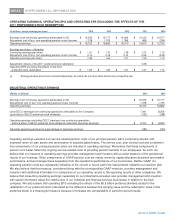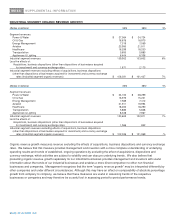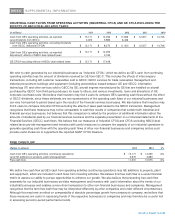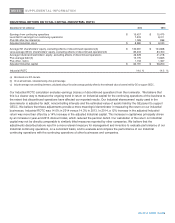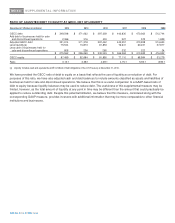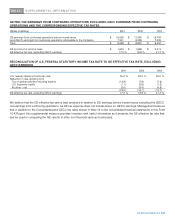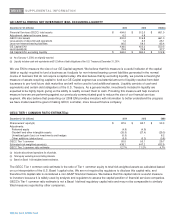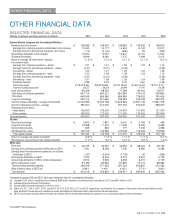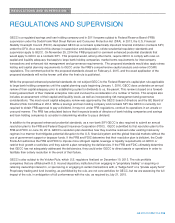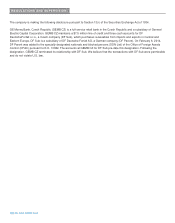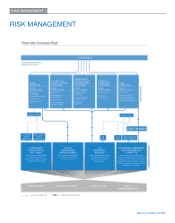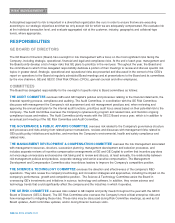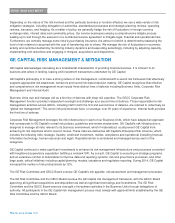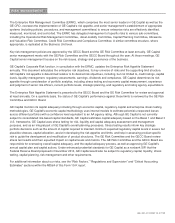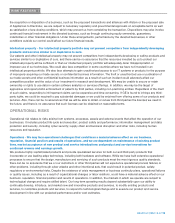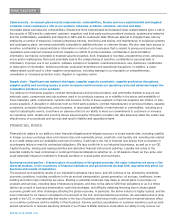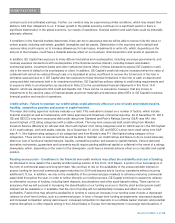GE 2014 Annual Report Download - page 125
Download and view the complete annual report
Please find page 125 of the 2014 GE annual report below. You can navigate through the pages in the report by either clicking on the pages listed below, or by using the keyword search tool below to find specific information within the annual report.
GE 2014 FORM 10-K 105
REGULATIONS AND SUPERVISION
REGULATIONS AND SUPERVISION
GECC is a regulated savings and loan holding company and in 2011 became subject to Federal Reserve Board (FRB)
supervision under the Dodd-Frank Wall Street Reform and Consumer Protection Act (DFA). In 2013, the U.S. Financial
Stability Oversight Council (FSOC) designated GECC as a nonbank systemically important financial institution (nonbank SIFI)
under the DFA. As a result of this change in supervision and designation, stricter prudential regulatory standards and
supervision apply to GECC. On November 25, 2014 the FRB proposed for comment enhanced prudential standards that
would apply to GECC as a nonbank SIFI. This proposal would, among other items, require GECC to comply with rules on
capital and liquidity adequacy that apply to large bank holding companies, market terms requirements for intercompany
transactions and enhanced risk management and governance requirements. The proposed standards would also apply stress
testing and capital planning requirements to GECC under the FRB’s comprehensive capital analysis and review (CCAR)
regulations. The comment period for the proposed standards closed on February 2, 2015, and the exact application of the
proposed standards will not be known until after the final rule is published.
While the proposed enhanced prudential standards do not subject GECC to the Federal Reserve’s capital plan rule applicable
to large bank holding companies until the capital planning cycle beginning January 1, 2016, GECC does undertake an annual
review of their capital adequacy prior to establishing a plan for dividends to us, the parent. This review is based on a forward-
looking assessment of their material enterprise risks and involves the consideration of a number of factors. This analysis also
includes an assessment of their capital and liquidity levels, as well as incorporating risk management and governance
considerations. The most recent capital adequacy review was approved by the GECC board of directors and the GE Board of
Directors Risk Committee in 2014. While a savings and loan holding company and nonbank SIFI like GECC is currently not
required to obtain FRB approval to pay a dividend, it may not, under FRB regulations, conduct its operations in an unsafe or
unsound manner. The FRB has articulated factors that it expects boards of directors of bank holding companies and savings
and loan holding companies to consider in determining whether to pay a dividend.
In addition to the proposed enhanced prudential standards, as a non-bank SIFI GECC is also required to submit an annual
resolution plan to the FRB and Federal Deposit Insurance Corporation (FDIC). GECC submitted its first resolution plan to the
FRB and FDIC on June 30, 2014. GECC’s resolution plan describes how they could be resolved under existing insolvency
regimes in a manner that mitigates potential disruption to the U.S. financial system and the global financial markets without the
use of government support or taxpayer funds. If the FRB and FDIC determine that their resolution plan is deficient, the Dodd-
Frank Act authorizes the FRB and FDIC to impose more stringent capital, leverage or liquidity requirements on GECC or
restrict their growth or activities until they submit a plan remedying the deficiencies. If the FRB and FDIC ultimately determine
that GECC has not adequately addressed the deficiencies, they could order GECC to divest assets or operations in order to
facilitate their orderly resolution in the event of their failure.
GECC is also subject to the Volcker Rule, which U.S. regulators finalized on December 10, 2013. The rule prohibits
companies that are affiliated with U.S. insured depository institutions from engaging in “proprietary trading” or acquiring or
retaining ownership interest in, or sponsoring or engaging in certain transactions with, a “hedge fund” or a “private equity fund.”
Proprietary trading and fund investing, as prohibited by the rule, are not core activities for GECC, but we are assessing the full
impact of the rule, in anticipation of full conformance with the rule, as required by July 21, 2015.


